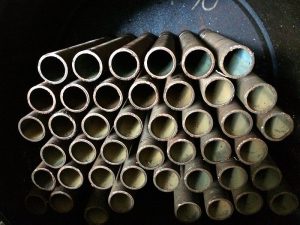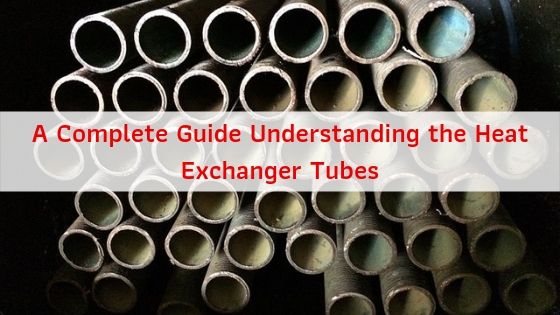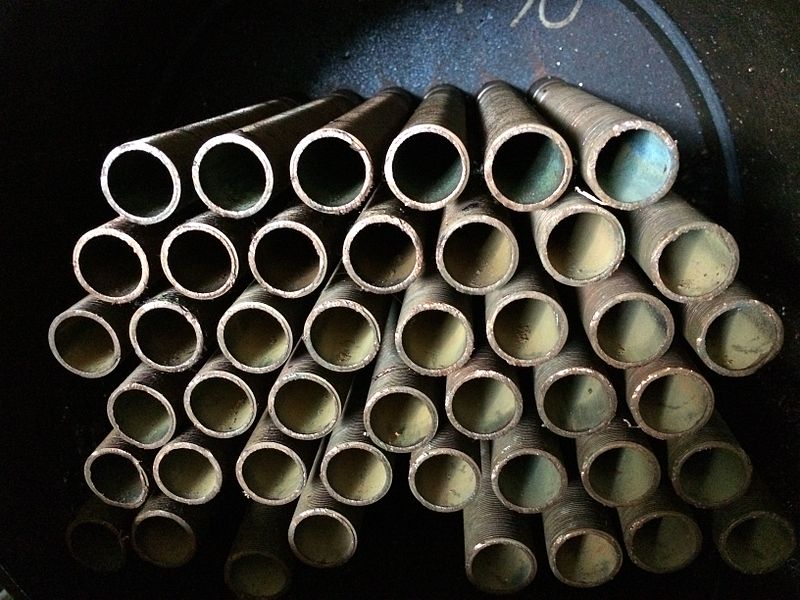Quick Inquiry
In the landscape of industrial heat exchange systems, U-tube heat exchangers are crucial for efficiency. These indispensable components play a pivotal role in various sectors, from petrochemical plants to HVAC systems. This comprehensive guide aims to discuss the significance, functionality, and design aspects of U-tube heat exchangers, shedding light on why they are undeniably vital in modern industrial processes.
What Is A U-Tube Heat Exchanger?
A U-tube heat exchanger is a common configuration used in thermal management. As the name suggests, it comprises a bundle of tubes bent into a U-shape, typically housed within a shell. The design facilitates the exchange of heat between two fluids, ensuring efficient energy transfer without direct contact between them. This fundamental principle serves as the foundation for the diverse applications of U-tube heat exchangers across industries.

The operational mechanism of these heat exchangers hinges on the counterflow or parallel flow arrangement of the fluid streams which is discussed further.
Different Parts of a U-Tube Heat Exchanger
Tubes:
The heart of the U-tube heat exchanger, these tubes constitute the primary components for heat exchange. Constructed from materials tailored to withstand corrosive environments and high temperatures, they ensure prolonged operational durability.
Shell:
Surrounding the tube bundle, the shell provides structural support and containment for the fluid streams. Its design varies depending on factors like pressure, temperature, and fluid properties, with options ranging from cylindrical to rectangular configurations.
Tube Sheets:
Positioned at both ends of the tube bundle, tube sheets serve as crucial interfaces, securing the tubes in place while facilitating fluid ingress and egress. Their robust construction is paramount for maintaining structural integrity under operational conditions.
Headers:
These components connect the tubes to the inlet and outlet piping, enabling seamless integration within the larger system. Headers play an important role in ensuring uniform flow distribution and minimising pressure drop across the heat exchanger.
Baffles:
Strategically placed within the shell, baffles optimise fluid flow patterns to maximise turbulence and enhance heat transfer efficiency. Their geometric configuration and spacing are designed to mitigate flow stagnation and promote uniform distribution.
Support Structures:
Integral to the overall stability of the U-tube heat exchanger, support structures provide mechanical reinforcement and alignment for the tube bundle and other components. Proper installation and maintenance of these structures are imperative for long-term reliability.
Thermal Insulation:
External insulation layers mitigate heat loss and minimise thermal gradients, optimising energy efficiency and operational performance. Insulation materials are selected based on thermal conductivity, environmental compatibility, and regulatory compliance.
Access Ports:
Incorporated at strategic locations, access ports facilitate routine inspection, maintenance, and cleaning operations. Their design considerations encompass factors like size, location, and sealing mechanisms to ensure operational convenience and safety.
How Do U-Tube Heat Exchangers Work
Fluid Circulation:
U-tube heat exchangers operate on a simple yet effective principle of transferring heat between two fluid streams without direct contact. One fluid, known as the process fluid, flows through the tubes, while the other, often a utility fluid like water or air, circulates the tubes within the shell. This arrangement allows for efficient heat exchange while maintaining a separation between the two fluids, crucial for preventing contamination or undesired chemical reactions.
Heat Transfer Mechanism:
Heat transfer in U-tube heat exchangers occurs primarily through conduction across the walls of the tubes. As the hot process fluid flows through the tubes, it releases thermal energy to the cooler utility fluid flowing around them. The temperature difference between the two fluids drives this heat transfer process, with the heat flowing from the hotter fluid to the cooler one. This mechanism ensures efficient energy utilisation and optimal temperature control in industrial processes.
Counterflow or Parallel Flow Arrangement:
U-tube heat exchangers can be configured for counterflow or parallel flow operation, depending on the specific requirements of the application. In counterflow, the process fluid and utility fluid flow in opposite directions, maximising the temperature differential across the length of the heat exchanger. This configuration offers superior heat transfer efficiency and is commonly used in applications where achieving maximum temperature differences is essential, such as in condensers and evaporators. On the other hand, parallel flow involves both fluids moving in the same direction, which is beneficial for applications where maintaining uniform temperatures is critical, such as in preheating processes.
Turbulence Generation:
Turbulence is crucial in enhancing heat transfer efficiency within U-tube heat exchangers. The U-shaped configuration of the tubes induces turbulence in the fluid flow, disrupting the formation of boundary layers and promoting better mixing between the fluids. This turbulence increases the convective heat transfer coefficient, leading to higher rates of heat exchange and improved overall performance of the heat exchanger. By maximising turbulence, the heat exchangers can achieve greater thermal efficiency compared to other designs.
Continuous Operation:
U-tube heat exchangers are designed for continuous operation, making them suitable for applications requiring steady heat exchange processes. Whether used for heating, cooling, or condensing purposes, these heat exchangers can maintain consistent performance over extended periods, ensuring uninterrupted operation of industrial systems. This reliability is essential for maintaining productivity and efficiency in various sectors, including chemical processing, power generation, and HVAC systems.
Minimal Fouling:
The U-tube configuration minimises the risk of fouling, a common issue in heat exchangers caused by the accumulation of deposits on the inner surfaces of the tubes. The turbulent flow induced by the U-shaped tubes helps prevent the buildup of fouling materials by promoting self-cleaning action. This reduces the frequency of maintenance interventions required to clean or remove fouling, resulting in prolonged operational uptime and lower maintenance costs for businesses.
Adaptability:
U-tube heat exchangers are highly adaptable to a wide range of fluid types, flow rates, and temperature ranges, making them versatile solutions for diverse industrial applications. Whether handling corrosive chemicals, high-pressure steam, or chilled water, they can be customised to meet the specific requirements of each application. Their adaptability allows businesses to optimise their thermal management processes and achieve efficient heat transfer in various operating conditions.
U-tube Heat Exchanger Benefits
Efficiency:
The U-tube design maximises heat transfer efficiency by promoting turbulence and optimising the temperature gradient between the process and utility fluids. This results in higher rates of heat exchange and improved thermal performance compared to other heat exchanger configurations.
Compact Design:
U-tube heat exchangers offer a compact footprint, making them ideal for installations where space is limited. Their efficient design minimises the required floor area without compromising performance, allowing businesses to optimise their use of available space in industrial facilities.
Enhanced Heat Transfer:
The U-shaped tube configuration induces turbulence in the fluid flow, which enhances heat transfer rates by disrupting boundary layers and promoting better mixing between the process and utility fluids. This results in improved heat exchange efficiency and higher thermal performance compared to straight-tube counterparts.
Versatility:
U-tube heat exchangers are versatile solutions that can be customised to meet the specific requirements of various industrial applications. Whether used for heating, cooling, condensing, or evaporating processes, they can accommodate different fluid types, flow rates, and operating conditions, making them suitable for a wide range of industries and applications.
Reduced Maintenance:
The self-cleaning action of turbulent flow within the heat exchangers helps prevent fouling and reduces the need for frequent maintenance interventions. This results in lower maintenance costs and prolonged operational uptime for businesses, contributing to overall cost savings and improved reliability of industrial systems.
Cost-Effectiveness:
U-tube heat exchangers offer a cost-effective solution for thermal management needs, providing efficient heat transfer performance at competitive prices. Their high thermal efficiency, long operational lifespan, and reduced maintenance requirements contribute to lower operating costs and improved return on investment for businesses.
High Durability:
Constructed from high-quality materials such as stainless steel or titanium, U-tube heat exchangers exhibit excellent corrosion resistance and mechanical strength, ensuring long-term durability and reliability in demanding industrial environments. This durability reduces the risk of premature failure and downtime, allowing businesses to maintain consistent productivity and operational efficiency.
Easy Installation:
They are designed for easy installation and integration into existing systems, minimising downtime and installation costs for businesses. Their straightforward design and standardised components simplify the installation process, allowing businesses to quickly deploy and commission these heat exchangers in industrial facilities.
Applications of U-Tube Heat Exchangers
Applications in the Industrial Sector
HVAC Systems:
U-tube heat exchangers play a vital role in heating, ventilation, and air conditioning (HVAC) systems for commercial and industrial buildings. They facilitate the exchange of heat between indoor and outdoor air, ensuring optimal temperature control and energy efficiency.
Power Generation:
In power plants, they are used in various processes, including steam generation, condensation, and turbine cooling. They help maximise thermal efficiency and maintain operational stability in power generation facilities.
Oil Refining:
U-tube heat exchangers are integral to the refining of crude oil into various petroleum products. They facilitate heat transfer in processes such as distillation, catalytic cracking, and desalting, contributing to the production of high-quality fuels and lubricants.
Chemical Processing:
The chemical industry relies on these heat exchangers for heating, cooling, and condensing processes in the production of chemicals and petrochemicals. They enable precise temperature control and efficient energy utilisation in chemical reaction vessels and distillation columns.
Metal Processing:
U-tube heat exchangers are utilised in metal processing applications such as heat treatment, annealing, and quenching. They help regulate temperatures during various metallurgical processes, ensuring the desired mechanical properties and quality of metal products.
Applications in the Pharmaceutical Industry
Sterilisation:
U-tube heat exchangers are employed in pharmaceutical manufacturing facilities for sterilising liquids, equipment, and packaging materials. They play a critical role in ensuring product safety and compliance with stringent regulatory standards.
Drug Manufacturing:
These heat exchangers facilitate precise temperature control in pharmaceutical processes such as crystallisation, drying, and evaporation. They contribute to the efficient production of pharmaceutical formulations while maintaining product integrity and consistency.
Cleanroom Environments:
HVAC systems equipped with U-tube heat exchangers are essential for maintaining cleanroom environments in pharmaceutical facilities. They help control temperature and humidity levels to ensure optimal conditions for drug manufacturing and storage.
Applications in the Chemical Industry
Reaction Cooling:
The heat exchangers are used in chemical reactors to remove heat generated during exothermic reactions. They prevent overheating and facilitate efficient heat dissipation, allowing for precise control of reaction kinetics and product quality.
Solvent Recovery:
In chemical processing plants, U-tube heat exchangers are crucial in solvent recovery systems. They facilitate the condensation of vapours emitted during solvent evaporation processes, enabling the recovery and reuse of valuable chemicals.
Distillation:
These tubes are employed in distillation columns for separating chemical components based on their boiling points. They facilitate heat exchange between the ascending vapour and descending liquid streams, contributing to the efficient fractionation of chemical mixtures.
Applications in the Food Industry
Pasteurisation:
U-tube heat exchangers are utilised in the food industry for pasteurising milk, juices, and other beverages. They heat the product to a specific temperature for a predetermined time, effectively destroying harmful pathogens while preserving flavour and nutritional quality.
Food Processing:
They are employed in various food processing applications, including cooking, blanching, and sterilisation. They help maintain precise temperature control and ensure uniform heating or cooling of food products, enhancing safety and shelf life.
Brewing and Distilling:
In breweries and distilleries, U-tube heat exchangers are critical in the mashing, fermentation, and distillation processes. They facilitate the efficient transfer of heat between different stages of production, contributing to the quality and consistency of alcoholic beverages.
Applications in the Environmental Sector
Wastewater Treatment:
U-tube heat exchangers are utilised in wastewater treatment plants for various thermal processes, including sludge digestion, anaerobic digestion, and thermal hydrolysis. They help optimise the treatment efficiency and energy recovery from wastewater streams.
Geothermal Heating:
They are integral components of geothermal heating and cooling systems. They facilitate the exchange of heat between the underground geothermal reservoir and the circulating fluid, providing sustainable and efficient heating or cooling for residential and commercial buildings.
Renewable Energy:
U-tube heat exchangers play a role in renewable energy systems such as solar thermal power plants and biomass facilities. They contribute to the efficient conversion of solar or biomass energy into heat, which can be utilised for electricity generation or heating applications.
Get High-Performing U-Tube Heat Exchangers
Anand Seamless Limited is one of the leading heat exchanger manufacturers in India. We produce a variety of durable and high-performing heat exchangers that cater to different industries. With us, you can experience unmatched efficiency, reliability, and versatility in thermal management solutions tailored to your specific needs.
Our U-tube heat exchangers, crafted with precision by our leading experts, guarantee optimal heat transfer, minimal maintenance, and maximum durability. Don’t compromise on performance when it comes to your operations—choose the industry’s finest heat exchangers for superior results. Take the next step towards enhancing productivity, reducing energy costs, and achieving operational excellence.
Contact us at +91-9099996851 or write to us at inquiry@anandseamless.com to upgrade your industrial processes with high-performing U-tube heat exchangers. We will be happy to assist you.
lATEST BLOG |
|
How to Choose Right Grade Carbon Steel Seamless Tubes
Carbon steel seamless tubes are essential componen |
|
Basics of Aluminum Finned Tubes
In the world of heat exchange technology, aluminiu |
|
How to Enhance Mechanical Tubes for Various Applications
Mechanical tubes form the backbone of various indu |
|
Why Are U-Tube Heat Exchangers Undeniably Vital: A Complete Guide
In the landscape of industrial heat exchange syste |
|
Introductory Guide to Economizer Tubes
In the dynamic landscape of industrial operations, |





